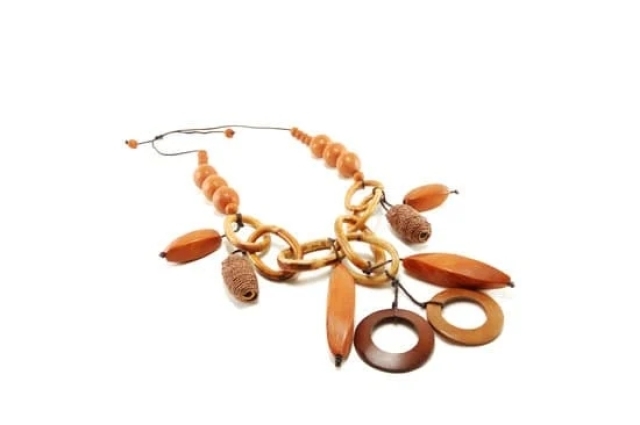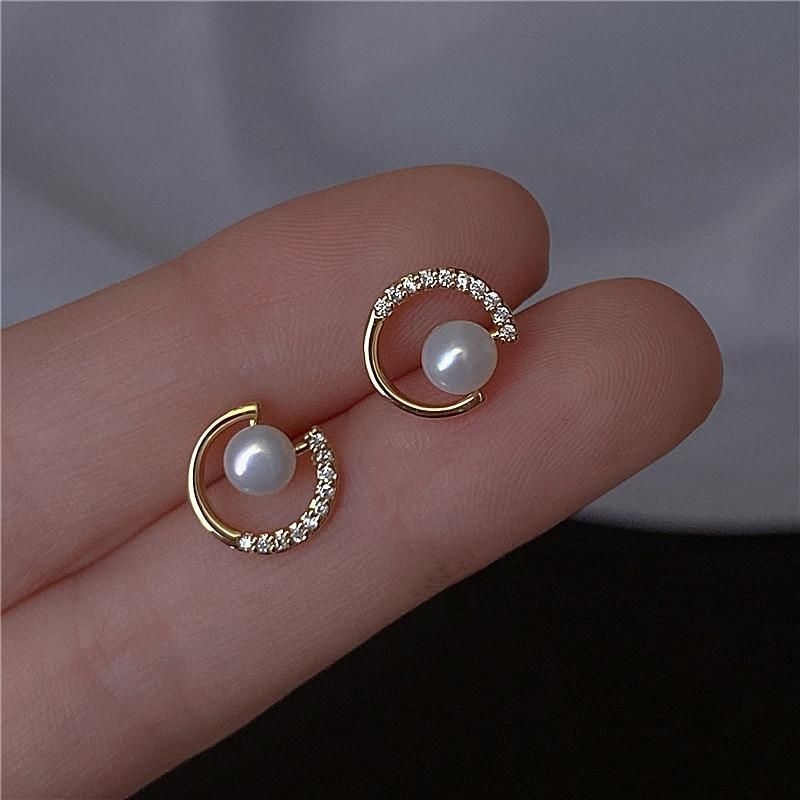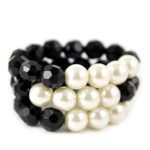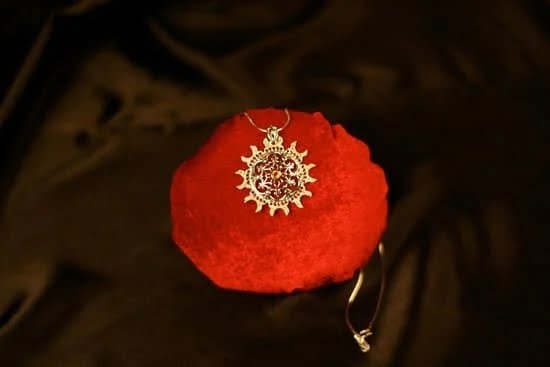Smelting metal for jewelry is the process of using heat to separate a metal from its ore and forming it into a solid piece. The process of smelting has been used since antiquity, with the first references recorded as far back as 4000 BC. Smelting metal is still widely-used today by hobbyists and professional jewelers alike.
It involves some basic tools, a few safety precautions, and a little bit of know-how. By understanding the fundamentals of smelting metal for jewelry, you can create beautiful pieces that will last for generations.
Types Of Metal Used in Jewelry Smelting The most common metals used in jewelry smelting are gold, silver, copper and alloys of these metals like brass or bronze. With the right equipment and techniques, many other rarer metals such as palladium or tungsten can also be melted down and worked with.
Lead and zinc are additional options that are usually more affordable than precious metals but usually seen as less desirable for making fine jewelry pieces due to their low malleability.
Smelting Equipment & Safety Measures When it comes to equipment needed for smelting metal, there are quite a few different options available depending on a person’s experience level and budget. For beginner jewelers just starting out with melting down metal for their projects, a charcoal forge or furnace is ideal due to its low cost and relatively low learning curve when working with this method.
For more experienced users, gas burning furnaces offer higher temperatures resulting in fewer reduction cycles and therefore faster project turnover times but they can be difficult to come by without access to larger industrial suppliers due to their potential hazardous nature.
Regardless of which type of furnace you choose, always remember that operating either device without proper knowledge or using them improperly without adequate safety measures can lead to severe injury or death; so it’s important to take appropriate steps ahead of time such as purchasing fire retardant-treated aprons/face masks/gloves before attempting any smelting related activities.
Benefits of Smelting Metal for Jewelry
Smelting metal for jewelry has many benefits over traditional casting techniques. The process of smelting is simpler and more cost-effective, resulting in a more consistent product. Jewelry designers can manipulate the properties of molten metal to better suit their needs. Furthermore, smelting produces a finer surface finish on the piece and greater detail in the design. This allows for a more professional looking jewelry piece with pieces that feature intricate design elements or details.
Advantages of Smelting Over Casting
When it comes to jewelry creating, it can be difficult to achieve precision when using casting methods. With smelting however, it is much easier to measure out exact proportions, thus resulting in consist results time and again.
Additionally, because smelting involves melting down raw materials into liquid form before creating custom pieces the level of choice available to creators is greatly increased. Pieces created with smelted metal are able to maintain their structural integrity with an even distribution and strength throughout the entire mold regardless of its shape or size.
The Benefits of Working With Precious Metals
One of the greatest advantages of working with precious metals such as gold and silver when smelting for jewelry making lies within its strength and durability. Many people choose these metals as they do not tarnish over time but instead keep their true luster die to metal having been treated in order to preserve this quality.
Metals such as gold are also very malleable which make them popular offers an array of custom shapes without hindering upon their shine or durability due to any weakness introduced through molded processes alone. As such, even some reasonably complex designs can still be achieved when working with precious metals.
Challenges of Smelting Metal for Jewelry
Smelting metal for jewelry has been a process that has been around since ancient times. In many cases, the same techniques used to smelt metals from those days are still used today by serious jewelry makers.
While smelting can be complicated, it is also a rewarding skill to learn, as it allows you to truly create something unique with your own hands. However, like any craft or material-making activity, smelting metal for jewelry presents some challenges to keep in mind.
The most obvious challenge of smelting metal is obtaining the necessary materials and practice to get the job done correctly each time. Metals require different temperatures when being melted down to achieve the desired results.
It is not enough just to throw everything together; putting too much heat on the wrong type of metal can have disastrous effects on its structural integrity or final appearance. Additionally, more complex pieces may entail multiple types of metals that will need to be melted and fused together – this requires specific timing and appropriate temperatures so as not to ruin either material while trying to form one single piece.
Finally, safety must always be considered when dealing with such hot materials and furnaces involved with smelting metal for jewelry-making purposes. Proper protective gear such as gloves, goggles, respirator masks and clothing should all be worn during this process, as it deals with potentially dangerous fumes and molten metal comprised of sharp edges that can cause injuries if proper care is not taken at all times when handling it.
Proper housing for melting projects is also extremely important due to smoke release – open flames need adequate ventilation so as not cause suffocation in confined areas or damage property due to smoke residue buildup from repeated use without proper cleaning sessions beforehand.
All in all while there are many challenges in smelting metal for jewelry-making purposes, these challenges are what makes this skill so rewarding once properly mastered over time. Many fine artists undertake this project because they understand that hard work and dedication pays off eventually; they realize they will one day have a fully functional furnace setup capable of creating custom pieces on demand that can even be sold off with successful marketing efforts afterwards.
Common Myths about Smelting Metal for Jewelry
Smelting Metal for jewelry is a popular craft, but it often comes with misconceptions. Here are some common myths about the practice:
- Myth #1: Smelting metal is dangerous – False. Smelting metal can be a safe activity if done correctly and safely. It requires an understanding of the safety protocols, such as wearing protective clothing and using proper ventilation. If done properly there is no danger in smelting metal that cannot be mitigated using these standard protocols.
- Myth #2: You need expensive equipment to smelt metal – False. This is not necessarily true; you can use a propane-fueled furnace or electric arc furnace to do basic smelting. If you require more precise results it might be necessary to invest in additional equipment, however this is not always necessary.
- Myth #3: Smelting takes too much time and effort – False. The process of smelting can take anywhere from several minutes to hours depending on the complexity of the project and its size. While it does take a certain amount of time and effort, most hobbyists find that once they become comfortable with their equipment and techniques the process quickly becomes enjoyable and even relaxing.
Moreover one should also consider other factors while smelting metal that affects the quality of result, such as fluxes used to improve surface finish or colour, protective coating agents used to preserve projects from corrosion or selection of metals alloys for specialized properties like higher tensile strength, malleability etc. A good attention to details along with an understanding of different metals will yield excellent results both aesthetically and functionally when creating jewelry pieces through smelting metals.
Learning coloration principles also play a significant role when creating coloured metallic pieces as alloys are adjusted carefully for best result during smelting and no two colorants react exactly alike while being heated up in extreme temperatures thus knowledge about alloy composition is very important. A few basic materials required are torch/burner either gas/electric powered, crucible, tongs used for hot objects handling which must also be considered before starting up any project related to smelting metal for jewelries.
Required Materials and Tools
Smelting metal for jewelry requires several materials and tools depending on the type of result you want to reach. To begin, you’ll need a propane powered furnace that can be found at most hardware stores. You also need a smelting crucible which is placed in the furnace and used to heat the metal.
Another important element is an attrite which looks like a pair of long handled tongs or tiny shovel that can be used for prodding metal in the crucible and shaping it with the crucible still hot. Other accessories required for this process are safety glasses, leather gloves and face mask.
melting The Metal
Depending on the type of metal being smelted, different temperature ranges may be necessary to obtain an effective result so referring to a chart before stirring can be helpful. Once the appropriate temperature has been reached inside the furnace, it’s time to place small pieces of scrap metal into the crucible. After about twenty minutes your newly melted metals should be ready, so people should use their protective gear before extracting them from the crucible using their attrite instruments.
Shaping The Metal
One of the perks of working with hot metals is that they are easy to work with while they are malleable and still warm from its initial melt down stage. Experienced jewelry makers often use heavier hammers in order to shape bigger pieces or fine dental picks for highlighting smaller details on pins or rings.
Most experienced jewelers also add fabricated patterns such as filigrees by piercing them out along hot furnace walls during their final form process but alternatively cold press techniques can be used for extra texture and flourishes too.
Different Types of Metal Smelting Techniques
Metal smelting is a process of melting metal ore to separate the metal from impurities and convert it into a desired alloy. Jewelry makers use different smelting techniques when creating items from precious metals such as gold, silver or platinum. Here are some of the metallic smelting methods commonly used in jewelry making:
- Casting – This is one of the oldest techniques for producing jewelry pieces. It involves placing a mould around molten metal that is then poured into the mould and allowed to set. The molten metal will cool and solidify within the mould, resulting in a desired shape or form.
- Fluxing – This technique helps to purify the molten metal by removing oxides and other non-metallic elements. A flux in liquid form or powder is added to the molten metal before casting which extracts out undesirable elements from the mixture.
- Electroplating – This technique uses electrical current to deposit a thin layer of another type of metal on top of another base material. Electroplating can be used to coat base metals with layers of gold, silver or platinum.
- Hammer Forging – Hammer forging involves pressing heated sheet metals with tools called dies which create patterns in specific places on the object being forged.
Each method has its own characteristics that make it ideal for different types of jewelry production and design. Casting is similar to traditional foundry work and can create more intricate details than simpler mold methods like fluxing and electroplating.
Electroplating is usually used due to its cost-effectiveness since only minimal amounts of precious metals are needed for coating other materials thus making them more affordable jewellery pieces. Hammer forging on the other hand is mainly used when creating intricately patterned objects out of metals such as pendants, rings, bracelets, necklaces etc because it allows for detailed designs in difficult-to-manipulate materials such as thin sheets.
Benefits and Disadvantages to Each Smelting Technique
Smelting metal for jewelry is a complex process with many different options. Each method offers unique benefits as well as disadvantages, so it’s important to understand the implications of using each technique before deciding on how to craft a piece.
The most common method of smelting metal for jewelry is casting. This technique involves pouring molten metal into a pre-made mold which forms the desired shape once cooled.
Since this can be completed without any prior knowledge about metallurgy or experience with working with metals, it is popular with beginning jewelers as well as those looking for quicker, more cost-effective methods to create pieces quickly and easily. An additional benefit of casting is the ability to produce identical pieces in bulk, something impossible when forging or hammering since every strike imparts its own unique mark on the finished product.
The second common method is forging, which requires more hands-on work as well as some knowledge in the field. This technique allows for a great deal of customization due to an artist’s ability to control specific properties and characteristics by manipulating temperatures and conducting physical manipulation techniques such as hammering and annealing.
With this method, an artisan has total accuracy in terms of design as each detail can be calculated during forging due to superior heat control capabilities. However, it does require a lot of time and expertise which may not be feasible for some people depending on their skill level and resources available at hand.
Finally, hammering metal into desired shapes is another option when crafting jewelry from smelted metals – though one that’s often overlooked due to its labor-intensive nature. Though it might appear primitive compared to modern techniques such engine lathes or stamping presses, hammering is still used today by skilled artisans who appreciate its traditional roots and the unique aesthetic value that comes along with Creating something handmade instead of machine made reproduction models mass produced elsewhere.
The malleability offered through making adjustments mid fabrication allows for beautiful designs imbued with aesthetically pleasing details once completing their projects; however using hammers do require precise swing speed ‘s and uniformity throughout each reparteé so consistency may not be possible without long term practice and skills honed over years.
Step-by-Step Guide to Smelting Metal for Jewelry
Step 1: Collecting Supplies
The first step in smelting metal for jewelry is to collect all the necessary supplies. This includes acquiring the metal you want to smelt, at least two heat-resistant containers, a thermometer, tapes, fluxes, and a degreaser or mild soap.
Step 2: Preparing the Metal
Next, the metal must be cleaned and cut into small pieces so that the heat will be evenly distributed throughout the metal. If it is a ferrous metal such as iron or steel, it should be degreased with a mild soap before cutting to avoid oxidation. It is also important to make sure all pieces are of similar size and weight to ensure proper smelting.
Step 3: Separating Metals
The metals that need to be melted down should be separated from other materials that may not react well with heat. These could include stones, gems or non-metal components of jewelry such as plastic beads or enamel accents. It is best to separate these items prior to melting them down together by using tape to stick them in place within one of the heat-resistant containers.
Step 4: Adding Fluxes & Melting The Metal
Fluxes help reduce corrosion in the metals and assist in sustaining an even temperature when heating them up. Although some fluxes may come pre-mixed they can also be purchased separately depending on what type of metal you’re melting down.
Once all pieces are clean and prepared properly, they can then be added into one container with selected fluxes before being placed within a second container filled with sand for added insulation and protection against extreme temperatures. Heat should then be applied carefully until molten metal forms – this typically requires temperatures between 1450-1600 degrees Fahrenheit (790-871 degrees Celsius).
Tips and Tricks for Professional-Looking Results
Smelting metal to make jewelry is a skill that requires patience, an understanding of the metal, and appropriate safety gear. Professional results can be achieved through following a few tips and tricks.
When preparing to smelt metal for jewelry the most important factor is safety. This means protecting yourself with proper clothing which includes rubber-soled shoes, long pants, and a long-sleeve shirt to prevent burns from spillage or other heat related accidents.
Heat resistant gloves should also be worn along with eye protection such as goggles when working near any flame. Preparing the workspace is key in achieving professional looking results as messy molten metal could leave uneven edges or bumps you didn’t plan for which would be difficult, if not impossible, to sand out afterwards.
Once everything is prepped then it’s time to move on to melting the metal itself. Always use only flux when melting metals such as brass or copper since it helps eliminate impurities that form forming bubbles while cooling the metal down after it has melted.
When selecting your fumes make sure you are using high grade flux which can help reduce fire scale or discoloration from your finished product. Finally get the temperature right because too hot can cause harm to your eyes from sparks while not hot enough will just leave lumpy and rough pieces instead of shining and sleek surfaces for your newly made jewelry piece.
Polishing off any projects with quality materials will help increase its lifespan while also producing professional-looking results each time you use these tips for smelting metal for jewelry creation. From safety gear selection and prepping the area all the way down managing temperatures and using proper flux; taking extra precautions will save extra frustration at having repeat attempts or even ruining a clean piece while ending with lower quality finest pieces than expected.
Finishing Touches
Creating jewelry from smelted metal is a practice that dates back centuries. Jewelers can get creative with the types of metals used in their craft and combine different alloys and precious metals to create unique pieces. With the right tools and materials, one can learn this traditional skill and begin making beautiful jewelry.
The first step to smelting metal for jewelry is selecting your desired materials. Many metallurgists seek out precious metals like gold, silver, platinum, and copper, but there are other options available as well.
You will want to ensure that your chosen metals are malleable enough to work with the size and design you have in mind for the piece being created. After your supplies have been gathered and the design has been finalized, now it’s time to start melting the metal.
This part of the process requires a lot of caution as you’ll be dealing with dangerously high temperatures while working over an open flame or forge. For most amateurs it may be safest to use an electric furnace rather than a more complicated setup involving torches or charcoal pits.
Be sure to wear protective gear-like thick gloves-and have some safety equipment close by such as a fire extinguisher or bucket of water in case of an emergency. Once all safety measures have been taken care of you can begin heating up your material via manual cranking or electricity until melted enough for shaping with molds, wax casts, or other tools at higher temperatures.
The last step is adding any additional details you wish once it has cooled completely into its new form. This includes color finishes, beading, embellishments, encrusting stones or gems etc., basically anything you’d like to add before setting and polishing to give it extra sparkle. Just remember that whatever finishing touches you add should account for how pliable certain metals may become when heated; choose wisely if your desired finish involves post-heat manipulation.
Safety Considerations when Smelting Metal for Jewelry
Smelting metal for jewelry can be a dangerous pursuit and should not be done without due care and attention. It is important that the workshop environment you create is as safe as possible to protect yourself and others. The following considerations should be taken into account when smelting metal for jewelry:
- Ensure there is a source of fresh air circulating throughout the workspace.
- Ensure protective clothing is worn including respirators, gloves, safety glasses and sturdy shoes.
- All tools should be in good condition with no loose or frayed wires.
When working with smelting metal for jewelry it is important to have the right tools for the job. Basic tools such as hotplates, burners, ladles and tongs will help to give optimal results when combined with sand pits for fire behaviour control. Careful setup of these items will help reduce risk of harm or injury coming from either sparks or flames generated during this process.
Using fluxes and borax helps to produce safer conditions in smelting operations. Fluxes bind components together and help reduce contaminants while borax increases surface tension on molten metals, making them softer and more malleable, reducing chances of injuring yourself on spillage or splashback. Both also aid in preventing oxidation of metals which lead to discoloration.
When firing crucibles containing molten metal only use materials designed for this purpose as other containers can suffer from wear quicker, increasing chances of splashes occurring. Always keep your torch flame away from combustible materials nearby such as insulation boards or wood shavings as these are highly flammable when exposed to intense heat and could cause flare-ups if left unchecked.
Aftercare and Maintenance Advice for Smelted Jewelry
Smelting metal for jewelry can be an enjoyable and rewarding experience. It is also a way to obtain beautiful unique pieces that no one else will have. When the smelting process is properly done, it can yield impressive results – such as intricate shapes and detail. But how do we go about ensuring that our newly crafted smelted jewelry lasts long-term?
The first step in long-term jewelry care is cleaning and storing. Clean your new piece gently with a soft cloth soaked in warm water and mild soap; do not scrub harshly or use any abrasive materials for this purpose.
Also, avoid getting perfumes or lotions on your jewelry since these chemicals can cause it damage and discoloration over time. After cleaning, make sure to store the jewelry away from other pieces so there’s no potential for scratching or rubbing against them.
Another important aspect of maintenance for smelted metals is protecting them from environmental conditions such as temperature changes and humidity. These extreme conditions can cause metal to expand and contract at different rates than other metals, leading to cracking or even separation at the seams. If you need to transport your smelted jewelry, use an airtight container or wrap individual pieces individually in soft tissue paper before packing them away in a secure box.
The final step is periodic inspections of your smelted metal jewelry by a professional jeweler, who will be able to spot any signs of weakening or wear before they become serious problems. This could include checking for loose or missing stones, changes in color due to oxidation, breakage from impact, etc., as well as polishing up any tarnish on the surface of the metal itself when necessary.
Regular checks like these are recommended if you want optimal performance from your smelted metals over time without sacrificing quality for cost.

Welcome to my jewelry blog! My name is Sarah and I am the owner of this blog.
I love making jewelry and sharing my creations with others.
So whether you’re someone who loves wearing jewelry yourself or simply enjoys learning about it, be sure to check out my blog for insightful posts on everything related to this exciting topic!





